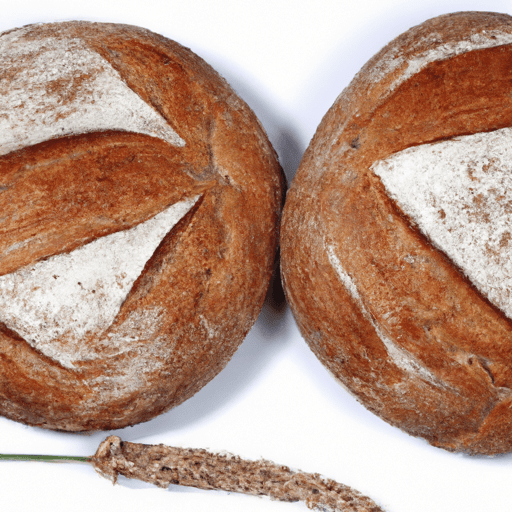The Art of Boule: A Delightful Bread for Any Occasion
If you consider yourself a bread aficionado or merely enjoy the simple pleasure of warm, freshly baked bread, then you must acquaint yourself with the wonder of boule. Derived from the French word for “ball,” boule is a traditional bread with a distinct round shape that perfectly complements its delectable taste and versatility in the kitchen.
A Taste Sensation
Boule is characterized by its crusty exterior and soft, airy interior. The crust, often featuring a deep golden hue, is delightfully crunchy and an ideal canvas for slathering with butter or dipping into soups and sauces. As for the interior, it boasts a tender and chewy crumb, with a subtle tang that develops from the fermentation process. These qualities make boule a beloved choice for bread lovers seeking a balance between crusty textures and moist flavors.
Culinary Versatility at its Finest
One of boule’s greatest strengths lies in its versatility in the kitchen. Its round shape and rich flavor make it a versatile bread that can serve countless purposes. It’s perfect for creating hearty sandwiches, whether it’s loaded with roasted vegetables, deli meats, or flavorful spreads. Sliced thin, boule can be transformed into a crispy crostini, an essential base for decadent bruschetta or delightful canapés. Additionally, its tender crumb makes boule an excellent companion to soups, stews, and sauces, as it can readily absorb their flavors without becoming soggy.
Nutritional Value and Health Benefits
Beyond its culinary appeal, boule also offers nutritional benefits. Rich in essential macronutrients, it provides energy while containing moderate amounts of fat and cholesterol. Boule is also a good source of dietary fiber, aiding digestion and promoting a healthy gut. Furthermore, as a natural source of vitamins and minerals, such as B vitamins and iron, it supports overall well-being. However, it’s important to remember that boule, like any bread, should be enjoyed in moderation as part of a balanced diet.
A Historical and Cultural Journey
Boule has a rich history dating back centuries. In medieval Europe, boules were baked in communal ovens in villages, providing sustenance for the local community. The round shape made them easy to bake and transport, making boule a practical and reliable bread for sharing. Over time, boule evolved beyond its humble origins and became a staple in French cuisine. Today, it is cherished around the world, not only for its distinctive taste but also for its cultural significance.
Interesting Facts About Boule
- Boule is often made using a sourdough starter, which adds depth of flavor and is responsible for its characteristic tanginess.
- While classic boule has a round shape, variations can include different sizes and even elongated forms, such as batard or baguette.
- The round “scoring” marks on the top of a boule not only serve an aesthetic purpose but also help control the dough’s expansion during baking, ensuring an even rise.
- Boule is widely associated with artisanal baking due to its meticulous preparation and attention to detail.
- The art of making boule requires patience and skill, as the fermentation process and precise kneading techniques contribute to its exceptional texture and taste.
Whether you’re exploring the art of baking bread or seeking a delicious addition to your next meal, boule offers a delightful experience for all. Its harmonious blend of flavors, culinary versatility, and rich history make it a must-try for bread enthusiasts and food lovers alike. So go ahead, let the aroma of freshly baked boule permeate your kitchen, and indulge in a slice of bread that truly captures the essence of artisanal craftsmanship.
Boule
Origin: Boule is a type of bread that originated in France and is closely associated with French cuisine. The word “boule” translates to “ball” in French, which describes the shape of this loaf.
Common uses: Boule is a versatile bread that can be used for a variety of purposes. It is commonly used to make sandwiches, toast, croutons, and bread bowls for soup. Boule is also often served alongside soups and stews.
Nutritional benefits: Boule is typically made from wheat flour, which provides carbohydrates, protein, and dietary fiber. The exact nutritional profile may vary depending on the specific recipe and ingredients used. Boule can be a good source of energy and can contribute to a balanced diet when consumed in moderation.
Unique properties: Boule is characterized by its round shape and firm crust, which is achieved by baking it in a covered vessel such as a Dutch oven. This method helps create a thick, chewy crust and a soft, moist interior. Boule can have a slightly sour flavor due to the fermentation process of the dough, which is often achieved through the use of a sourdough starter.
Historical significance: Boule has a long history in French baking tradition and is considered a staple in French cuisine. It is an essential part of the traditional French bread selection, along with baguette and pain de campagne. The craftsmanship and skill required to produce a high-quality boule have been recognized and celebrated for centuries. Boule’s popularity has spread beyond France and can now be found in bakeries worldwide.




Use the share button below if you liked it.
It makes me smile, when I see it.